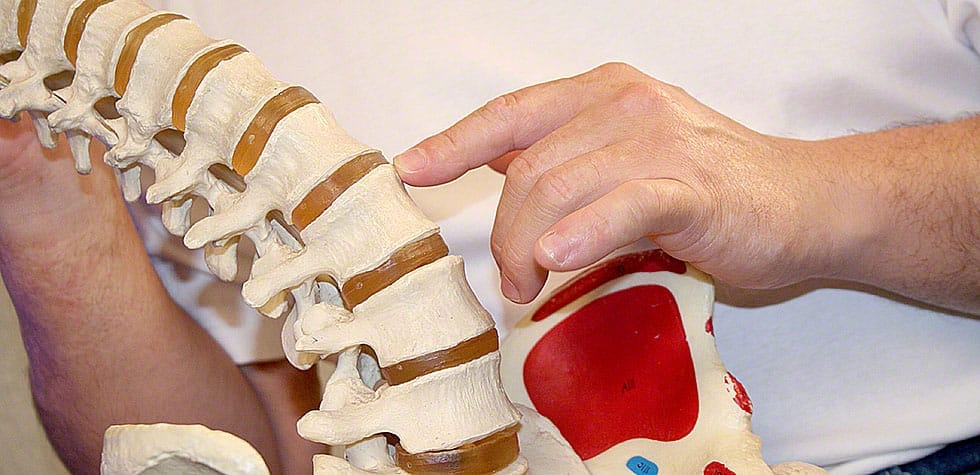
Back pains and injuries are unbearable at times, but nerve damage and compressions can have lasting effects on your body. In some cases of spinal pain or nerve damage, foraminotomy is recommended by orthopedic surgeons. Here is a guide to this surgical procedure.
Foraminotomy
Foraminotomy is a surgical procedure in which the area around the compressed nerves is increased. Your spinal cord has multiple small sections of bones called vertebrae. It is one of the most integral parts of the nervous system.
A large network of nerves is present inside the vertebral column and they come out through small holes in between the vertebrae, called the intervertebral foramen. Sometimes, these small openings can become even more obstructed and it can cause compression on the nerves. This, in turn, can cause a lot of pain, discomfort, and a weird numbing sensation in your back and lower body.
A foraminotomy is the enlargement of the holes to relieve the pressure on the nerves and make it easier for you to function your back normally. This surgery does wonders for people with back pains and nerve injuries and it’s a lifesaver for people who suffer from spinal stenosis, in which the pain is excruciating to the point where you can’t even stand up or bend your back beyond a certain level.
This surgery is very quick depending on where the origin of the pain is and how big of an incision needs to be made to reach the obstructed foramen. Usually, an X-ray or MRI can determine and pinpoint the affected area, so that’s a good place to start.
Who Gets Foraminotomy?
You might be wondering: Who is the perfect candidate for a foraminotomy? Do I need a foraminotomy?
Well, there are certain ways by which you can figure out whether you need a foraminotomy or not.
For starters, you’re going to have to monitor your symptoms. Very common symptoms of spinal stenosis are as follows:
- Excessive back pain
- Inability to bend your back
- Numbing or tingling sensation in the back
- Permanent hunching of the back
- Loss of sensation in the back and lower, all the way down to your legs
You can also opt for a foraminotomy if all other measures are useless and you’re still feeling a lot of pain. Things like physical therapy, massages, light stretching, exercises, and taking pain medication aren’t working for you anymore. Anything that disrupts your normal life is something to be alarmed by and you need to consult with your doctor immediately to get to the bottom of the problem.
Also, keeping an eye on the pace of severity of the symptoms is important. If you feel like your condition is worsening day by day, then it is a sign to immediately get a doctor’s appointment. If it’s something serious like your bladder or bowel movement being affected by the nerve damage, then it’s also a good idea to have your doctor run a few tests, so that things can be controlled before they get out of hand.
Mainly, people who suffer from spinal stenosis will get a foraminotomy. Spinal stenosis is a condition in which the foramen of the vertebrae get blocked, due to the deposition of minerals like calcium, potassium, and even fat. This can cause a lot of pain and restriction in movement, so a foraminotomy is recommended.
If you’re an athlete, your sports medicine specialist Woodbridge and a back pain specialist should take multiple tests and suggest the procedure if it’s right for you.
What To Expect?
Getting surgery of any kind can be daunting, so here is what you can expect before, during, and after the surgery, so that you can calm your skittish nerves.
Before Foraminotomy
Once you experience the symptoms starting to flare up tremendously, you need to see a doctor. Here is what can happen during your consultation:
- The doctor will do a physical examination of your spine, just to look for any gaps and deformity in the bones.
- You will also be required to do an X-ray or MRI to help the doctor understand what’s going on inside your body.
- Routine blood tests will be required. This is the general protocol of any surgery.
- Your surgery day and date will be given to you, along with a general set of instructions, like quitting smoking, not consuming blood-thinning drugs, etc.
- Your doctor will also advise you to get anesthesia fitness, so that you’re good to go for the surgery and that there aren’t any complications.
- You will also be advised to stop taking any solid or liquid foods 8 to 10 hours before the surgery. Depending on the time of the actual surgery, you may need to stop eating somewhere around midnight.
During Foraminotomy
Here is what goes down in a foraminotomy:
- You will lie down on the operating table on your stomach.
- You will be administered anesthesia. A foraminotomy can be done under general or local anesthesia. The choice is ultimately up to you.
- The surgeon will make an incision where you feel the most pain. This is will be discussed during the consultation.
- All of the back muscles will be pushed aside so that the foramen are exposed. The surgeon will proceed to look for blockages.
- Once the blockages are found, special tools will be used to remove them and open up the foramen more. The nerves will instantly be relieved.
- Once everything is done, everything will be pushed back into place and the incision will be stitched up.
After Foraminotomy
Here is what you can feel after a foraminotomy:
- Once the surgery is complete, the anesthesia will wear off and you’ll gain consciousness.
- It’s normal to feel loopy and disorientated for the first couple of hours. Proper rest and liquid IV will make you feel better.
- You will remain on your stomach until you get the go-ahead from the doctor.
- You can move around after 2 to 3 hours, but you’ll feel slight pain in the incision area.
- You will need to take pain medications to deal with any discomfort.
Post-Surgery Care
Here are some things that you need to look after if you don’t want any problems to occur after a successful foraminotomy.
- The incision is always at risk of being infected. You need to keep it dry, clean, and free from any bacteria. Always examine it for any swelling or discharge.
- You can get discharged after a day of the surgery, but you’ll need to take it slow for a couple of weeks.
- Lots of rest and a little bit of walking are excellent for healing.
- Don’t try to lift heavy weight items right away, because your incision is still healing.
- Bending too much isn’t recommended.
- Don’t forget to go to every follow-up appointment so that the doctor can examine your progress and let you know of any other preventive and precautionary measures.
- If you can, have someone else drive you around for a few weeks.
- Sleep in a comfortable position and wear a neck brace if you’re afraid of moving your neck unconsciously (if that’s your foraminotomy location).
Conclusion
A foraminotomy is a surgery that can help with nerve-related problems, especially when your back is concerned. You must visit a spine and back doctor Woodbridge who can assess your condition and suggest the right treatment or surgery for you.



